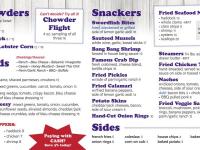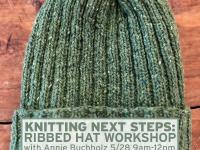The hype on coffee
The coffee obsession of many Americans has me stymied. Now I do like coffee, but I don’t love coffee, nor do I ever have more than just one cup of decaf for breakfast (and that’s it for the day).
When I am feeling really coffee-courageous, I might have a cup of Hazelnut decaf. Woo hoo! Everywhere I look there are people clutching a cup of Joe, whether they are in the car driving (don’t they worry about spilling in their laps?) or shopping in the grocery store (one handed cart steering looks quite difficult). While I was getting my hair trimmed the other day, a woman was actually drinking a cup (no lid or cover, from a china cup) while having her hair cut.
The coffee aisle in the market is daunting: row after row of bags, cans, canisters, bins and jars to choose from. OK, here’s the coffee scoop:
It all starts very simply with a coffee tree that bears what are called cherries. They are picked and dried in the sun (or soaked in water) to expose the coffee seeds, called green beans. It takes about 2,000 of these beans to yield about 5 pounds of coffee.
The green beans will stay fresh for years but once they are roasted, they lose their freshness quickly.
Who grows what?
Colombia: A medium-bodied, mellow coffee; the top grade is Supremo
Costa Rica: A rich, full-bodied coffee
Ethiopia: A rich, tangy, heavy-bodied coffee
Guatemala: A rich, full-flavored coffee
Hawaiian Kona: A mild, smooth, usually quite pricey coffee
Jamaica: A smooth, full-bodied coffee, not readily available in some areas
Java: A smooth, aromatic coffee
Kenya: A sharp, winy-tasting coffee; AA is the highest grade
Mexico: A mellow, aromatic coffee, usually from Oaxaca
Puerto Rico: A mild, heavy-bodied coffee
Sulawesi: A full-bodied, aromatic coffee
Sumatra: A smooth, aromatic coffee similar to Java, but heavier.
Yemen: A light, sharp coffee, often known as Mocha.
What grind should you use?
Coarse: Large particles for use in percolators, urns, plunger pots (French presses), and cold-water extraction brewers
Medium: Less coarse, but still sizable; for uses as above
Drip: Finer than medium ground coffee and best for electric-drip coffee makers
Fine: Finely ground, for use in cone-shaped filters and drip pots
Espresso: Very finely ground, for use in espresso machines
Turkish: Pretty much pulverized to the texture of flour and used in a traditional Turkish brewer
What's the deal with decaf?
For years the coffee beans were treated with the direct-contact method, which involved methylene chloride to extract the caffeine. This method was thought to be the best because it preserved the most flavor.
However, in 1989, the FDA (Food and Drug Administration) banned the use of methylene chloride in hair sprays because studies showed that it caused cancer in animals. Soon thereafter, General Foods converted its decaffeination process from methylene chloride to carbon dioxide.
The acceptable processes for decaffeinating coffee:
-Green coffee beans are soaked or steamed and rinsed with ethyl acetate, an ester that is found naturally in fruits and vegetables. This solvent is first circulated through a batch of moist green coffee beans and then recaptured in an evaporator while the beans are washed with water. The chemicals are drained and the beans get steamed again. The cycle of adding the solvent to the vessel, circulating it and emptying it is usually repeated several times until the coffee has been decaffeinated to the desired level. Ninety-six percent to 97 percent of the caffeine from coffee can be extracted this way.
-A charcoal filter is used in the Swiss water process of decaffeinating coffee. The charcoal is typically used with a carbohydrate solvent (highly compressed CO2) so only the caffeine is absorbed. The steps involved in this method first involve soaking the green coffee beans in hot water and the first batch of beans is discarded. The caffeine is then removed from the solution by the activated carbon filters, leaving the solution saturated with the flavor compounds which is then reused to soak a new batch of decaffeinated green coffee beans. This method is said to extract up to 98 percent of the caffeine.
-A third method for decaffeination is known as the sparkling water process, which is similar to the CO2 method. However, instead of using activated carbon filters to remove the caffeine, the caffeine is washed from the CO2 with sparkling water in a secondary tank.
-After that science lesson, let’s all sit down with a cup o’ Joe and one of my favorite treats, Coffee Blondies with Chocolate Chips. My dear friend Shirley sent me this recipe years ago and I think it may have been originally from “The Silver Palate Cookbook.”
Coffee blondies with chocolate chips
- 1 lb. dark brown sugar
- 1-1/2 sticks unsalted butter
- 2 Tbsp. strong instant coffee powder
- 1 Tbsp. hot water
- 2 large eggs, lightly beaten
- 2 Tbsp. vanilla extract
- 2 cups all purpose flour
- 2 Tbsp. baking powder
- 1/2 tsp. salt
- 1 cup chopped pecans
- 1 cup semisweet chocolate chips
Combine brown sugar and butter in a medium saucepan set over medium heat and cook, stirring often, until melted and smooth. Remove pan from heat. Dissolve the coffee in the hot water and stir into butter mixture; let cool to lukewarm. Add eggs and vanilla and stir until well combined. In a separate bowl, combine flour, baking soda and salt. Add dry mixture to wet mixture stirring to combine. Stir in pecans and chocolate chips. Spread batter evenly in an 11x8x2-inch baking dish coated with non-stick spray. Bake in a preheated 350°F oven for 25-30 minutes. Remove from oven and let cool completely before cutting into squares. Yield: 16 squares.
Coffee chiffon pie
Betty Chase was a student in one of my cooking classes in Wiscasset many years ago and generously shared this family recipe with me. Chiffon pies were very popular in the early 1900s and were called Sissy Pies, Fairy Fluff or Soufflé Pies.
- 1/2 cup sugar
- 1 envelope unflavored gelatin
- 2 tsp. instant coffee powder
- 1/2 tsp. salt
- 1-1/2 cups milk
- 2 large egg yolks, lightly beaten
- 1 tsp. vanilla
- 2 large egg whites
- 1/4 tsp. cream of tartar
- 1/4 cup sugar
- 1/2 cup whipping cream, whipped to stiff peaks
- One 8 or 9-inch prebaked pie shell, either purchased or homemade
- 1/4 cup chopped walnuts, optional
In a saucepan, combine 1/2 cup sugar, gelatin, coffee powder, and salt. Whisk in milk, egg yolks, and vanilla. Cook over medium heat, stirring until slightly thickened. Remove from heat. Chill mixture until it mounds slightly when stirred with a spoon. Beat egg whites with cream of tartar until soft peaks form. Gradually add sugar, beating on high speed of electric mixer, until sugar is incorporated and egg whites are stiff. Fold whipped cream into beaten egg whites; gently fold this mixture into coffee mixture. Spoon into prepared pie crust. Sprinkle with chopped nuts if desired. Refrigerate several hours before serving. Yield: 6-8 servings.
Paula Anderson is a freelance journalist specializing in food, entertaining and nutrition. She writes for several newspapers, as well as Maine Food & Lifestyle Magazine. She divides her time between Scarborough and Big Pine Key, Fla., where she lives with her husband Peter. Correspondence can be addressed to her at the Boothbay Register, P.O. Box 357, Boothbay Harbor, ME 04538 or the Wiscasset Newspaper, P.O. Box 429, Wiscasset, ME 04578. You can also write to her directly via email at pander@maine.rr.com.
Event Date
Address
United States























